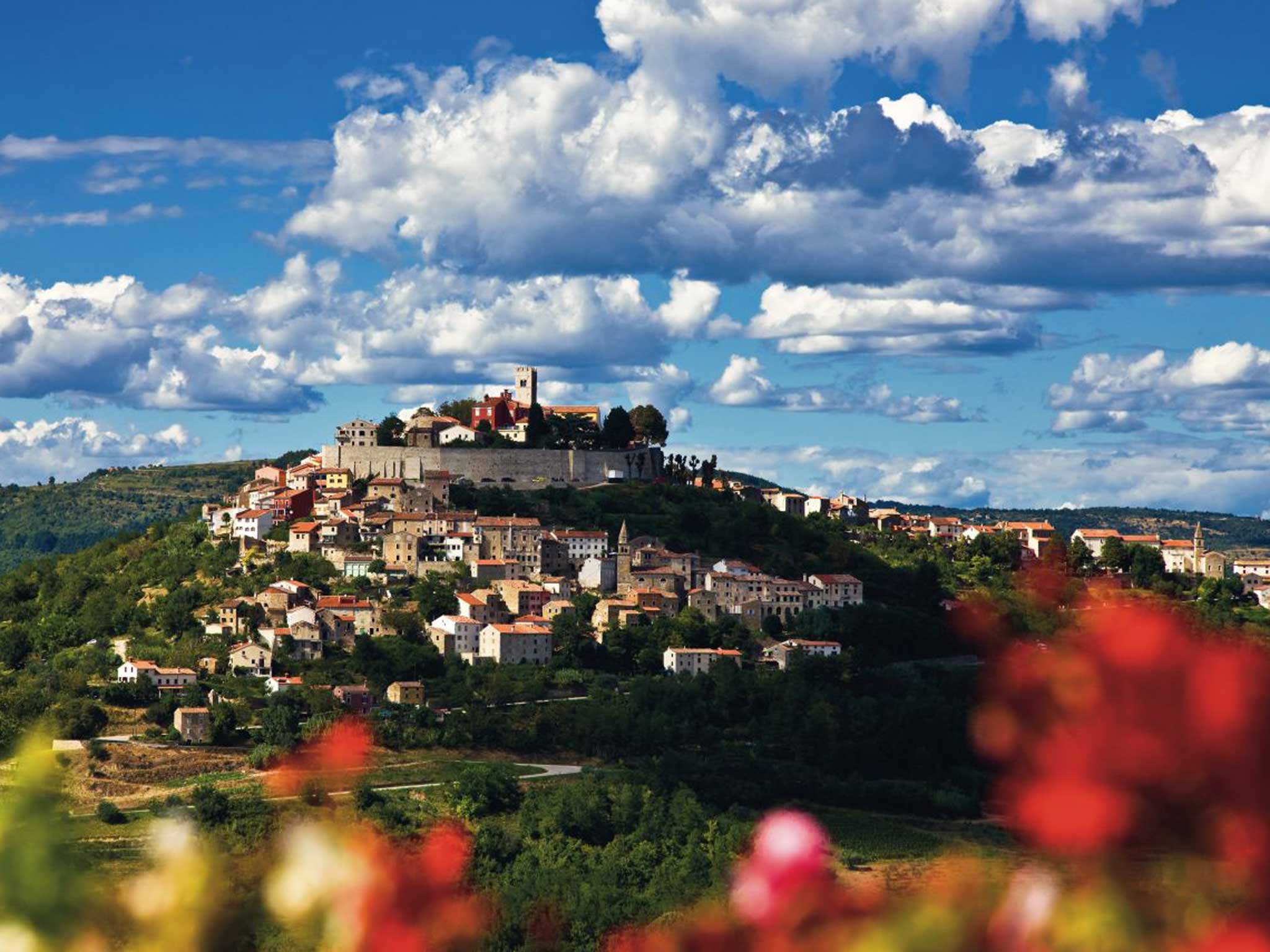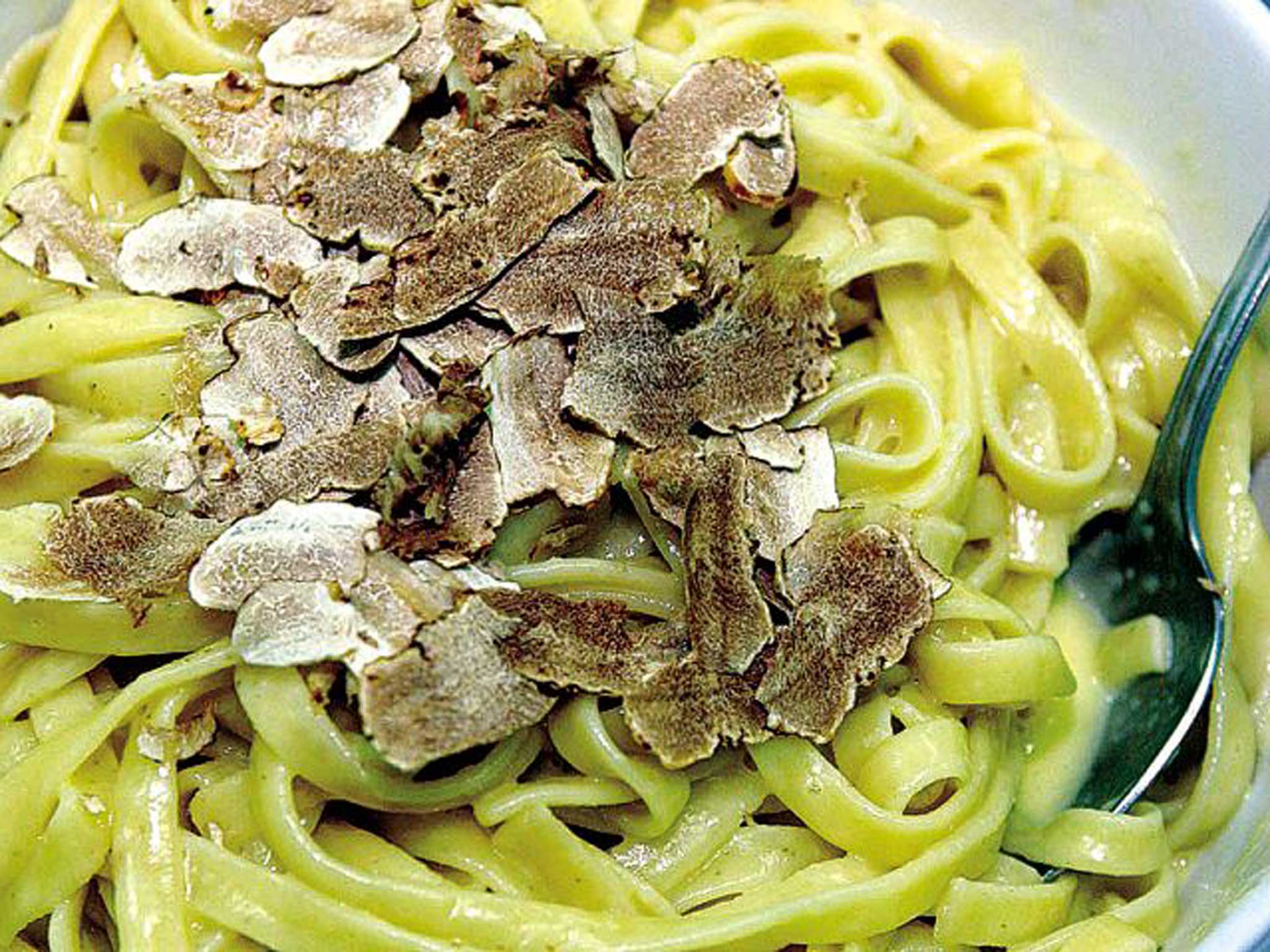Croatia: Hunt out an authentic flavour
First prize in last year's Bradt/Independent on Sunday travel-writing competition was a trip to Istria – and the chance to write about it in these pages. Here, winner Cal Flyn takes a gastronomic tour

Your support helps us to tell the story
From reproductive rights to climate change to Big Tech, The Independent is on the ground when the story is developing. Whether it's investigating the financials of Elon Musk's pro-Trump PAC or producing our latest documentary, 'The A Word', which shines a light on the American women fighting for reproductive rights, we know how important it is to parse out the facts from the messaging.
At such a critical moment in US history, we need reporters on the ground. Your donation allows us to keep sending journalists to speak to both sides of the story.
The Independent is trusted by Americans across the entire political spectrum. And unlike many other quality news outlets, we choose not to lock Americans out of our reporting and analysis with paywalls. We believe quality journalism should be available to everyone, paid for by those who can afford it.
Your support makes all the difference.Ivan Karlic has been hunting for truffles in the forests of Istria, the heart-shaped Croatian peninsula, since he was 10 years old. He inherited his passion from his mother Radmila, who in turn was initiated in the art by her own father in the woods around their home. The family estate sits in a valley below the medieval hilltop town of Motovun, in a region world-renowned for the quality and size of these fragrant fungi. The largest truffle ever known, weighing in at 1.5kg, was found in these woods.
Ivan has Blackie, a wire-haired mongrel, in tow. Blackie has been specially trained over months and years to sniff out truffles among the leaf litter and soft, damp earth. As soon as we're in the shade of the trees, she is on the hunt, nose skimming the ground, entirely alert. Ivan follows close behind, ready to leap in as soon as a truffle is detected. "Otherwise," he warns me, "she'll snap it up in one bite."
When we sit down for brunch up at the farmhouse I think I know how she feels. There is sheep's cheese with paper-thin truffle shavings, scrambled eggs stirred through with grated black truffle, smoked sausage studded with chopped truffle and crusty white bread – all washed down with a shot of mistletoe brandy. It is the first meal in my gastronomic tour of Istria's lush interior, a gourmet's paradise in the image of Tuscany or Provence where local producers compete for the most impressive accolades and top-class restaurants jostle for space in cobbled courtyards.
As well as black truffles, which can be harvested year round, the more unusual white truffle can be found on higher ground in Istria between September and January, and sells for up to €10,000 per kilo. The start of the white truffle season is celebrated each year in nearby Buzet, the self-declared "City of Truffles" where the Festival of Subotina is held. The celebration involves a giant omelette containing two thousand eggs and 10kg of truffles which is cooked in the main square on the second Saturday in September.

Grapes and olives also thrive in Istria's Mediterranean climate. I take a trip to the Kozlovic vineyard outside Momjan, where head vintner Gianfranco Kozlovic is at the forefront of the reinvention of the Croatian wine industry. "During Communist times [when Croatia was part of the former Yugoslavia] the emphasis was not so much on producing quality as quantity," he told me. "We would simply fill jugs of wine from the tap to be drunk at home. So, Teran, the typical Istrian red wine, in particular did not have a good reputation."
But after the bloody break-up of Yugoslavia, the so-called "Wine Spring" took hold. Gianfranco became one of a new generation of Croatian winemakers who were prepared to experiment, stepping away from traditional methods and embracing hi-tech gadgetry. Recently, he let his imagination run wild, sketching out the design for a brand new winery, now made real as a sculptural stack of polished concrete full of bleeping, blinking displays that would not look out of place as a Bond villain's lair.
The Kozlovic estate now produces around 200,000 bottles of its trademark white Malvazija and reserves the exclusive "St Lucia" label for the best vintages – 2009 and 2011 were particularly good years. The sweet Muskat is also highly regarded.
Milan Matkovic is making a similar splash in the world of olive oil. The former ad man returned to his tiny village of Pagubice, near Pazin, after a high-flying career in Paris. Istrian olive oil has the distinctive aroma of freshly cut grass, an unexpected and refreshing taste, perfectly suited for dunking cubes of feta or even drizzling over vanilla ice cream.Milan's oil mill, only four years old, has already racked up a number of honours for its Grimalda extra-virgin oil, including a gold medal last year in the international AVPA oil-producers' awards.
A short drive from Pazin through rolling hills, past tangled vines and hazelnut copses, I discover Toklarija, an intimate, six-table slow-food restaurant in a converted 16th-century oil mill. Over five courses and the best part of three hours, chef Nevio Sirotic presents me with the region's best offerings: his ever-changing menu is based on what's in season and is almost entirely locally sourced. Tendrils of wild asparagus, carpaccio of beef, the omnipresent truffle and a curious baked dessert whose thin crust turned out to be filled entirely, gloriously, by liquid chocolate.
"Incredible," I gasp at the end. "Where did you train?"
"With my mother," says Nevio, po-faced. "I learnt from the best."
Also keeping it in the family are the Skokos at Batelina, a startlingly good seafood restaurant in Banjole, on the southern tip of the peninsula, where the father catches the fish, the mother and mother-in-law cook, and the son is maître d' ("a situation that is better for you than it is for me, I think"). For fresh, imaginative dishes – shark's liver and red snapper carpaccio, followed by a cauldron of mixed shellfish – in unpretentious surroundings, it is hard to beat.
Prices may have risen in Croatia since it joined the EU last year, but bargains are still to be had when buying directly from the farm, mill or winery. I fly back with a suitcase full of truffle jam, hazelnut oil and individual preserved truffles in jars. The price? Nine euros from our friend Milan, £60 in the deli at home.
Travel essentials
Getting there
Cal Flyn travelled with Ryanair (0871 246 0000; ryanair.com), which flies from Stansted to Pula from £59. Alternatively, Jet2 (0871 226 1737; jet2.com) has flights from Edinburgh, Leeds/Bradford and Manchester.
Staying there
Hotel Kastel in Motovun (00 385 52 681 607; hotel-kastelmotovun.hr) has doubles from HRK806 (£85), including breakfast eating and drinking there Karlic Tartufi (00 385 52 667 304; karlictartufi.hr); Kozlovic (00 385 52 779 177; kozlovic.hr); Uljara Zlatni Brig (00 385 52 684 050; uljarazlatnibrig.com.hr).
More information
Join our commenting forum
Join thought-provoking conversations, follow other Independent readers and see their replies
Comments